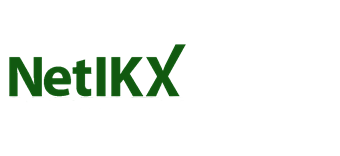Blog for January 2021 Seminar: Managing Knowledge in Project Environments
How can we manage knowledge more effectively in project environments? This was the question posed in the most recent NetIKX seminar, led by Judy Payne, an independent consultant and co-author of Managing Knowledge in Project Environments .
How do project managers define KM?
Judy began by comparing the 2012 and 2019 versions of the APM Body of Knowledge (BoK) definitions of knowledge management (KM). The 2012 entry reads ‘Knowledge management is the systematic management of information and learning. It turns personal information and experience into collective knowledge that can be widely shared throughout an organisation and a profession.’ Many participants felt that this confused the concepts of information management and knowledge management and failed to cover important aspects of KM such as managing tacit knowledge. The 2019 definition, however, is considerably broader, describing KM as ‘the holistic, cross-functional discipline and set of practices concerned with the way organisations create and use knowledge to improve outcomes.’ We agreed that this was an improvement, but the issue of defining KM to those outside the discipline remains. Judy pointed out that knowledge managers and project managers often have different mindsets, and it can be difficult to integrate KM into the project management body of knowledge.
The KM context within project management can be complex, as much of the KM which occurs within project management is not explicitly recognised as such – and conversely, much of what is labelled KM is often information management. Within a project environment, KM is often treated as a series of separate activities rather than as a tool to help produce better outcomes. There is a widespread belief that KM is simply a matter of capturing ‘lessons learned’ at the end of a project, whereas capturing knowledge is only one aspect of KM. In fact, KM practices can and should be integrated into the way a project is managed and the working environment.
Waterfall or agile? What does this mean for KM?
Judy then went on to compare the linear and iterative approaches to project management: within a linear (‘waterfall’) environment, knowledge is static, knowledge creation and application are separate and knowledge boundaries develop between stages, whereas in an iterative (‘agile’) project, knowledge is dynamic and flows well throughout the project and knowledge creation and application can be integrated. However, KM can pose a particular challenge in an agile environment due to the lack of documentation. One participant noted that although knowledge transfers well from one sprint to another, it is lost at the end of the project. The ‘correct’ approach is often dependent on the organisational culture, with some more traditional organisations being uncomfortable with the pace of the agile approach.
Sharing our experiences
For the breakout sessions, we were presented with three questions: what are your stories (good or bad) about KM in project work?; what are other examples of ‘hidden’ KM in project work? and how might KM thinking help you in future project work? Feedback from the sessions uncovered a number of common themes, including the fact that sometimes projects are ‘hidden’ in KM rather than the other way round – many of us had experience of working on something that could have been approached as a project but was not. Another theme was the way in which project managers focus on a linear progression with a clear outcome that can be measured in terms of material impact, whereas the benefits of KM cannot always be demonstrated so neatly: it was suggested that maybe we need to focus on benefits rather than objectives and on outcomes rather than outputs. Many thanks to Judy and to all who attended and contributed to this informative and highly interactive seminar.
By Carlin Parry. January 2021
